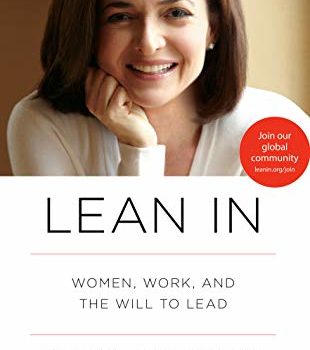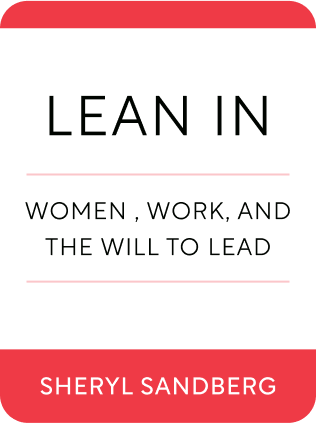

This article is an excerpt from the Shortform book guide to "Lean In" by Sheryl Sandberg. Shortform has the world's best summaries and analyses of books you should be reading.
Like this article? Sign up for a free trial here .
Is Sheryl Sandberg’s Lean In worth reading? What are the main factors, according to the author, that prevent women from seeking leadership roles?
Lean In, by Facebook COO Sheryl Sandberg, explores the professional, personal, and societal hurdles holding women back from leadership roles. To get more women into leadership positions and make true changes, Sandberg urges women to “lean in” to their careers, taking risks and being ambitious in their professional goals, while demanding more help at home.
Here is a brief overview of Lean In: Women, Work, and the Will to Lead by Sheryl Sandberg.
Lean In: Women, Work, and the Will to Lead by Sheryl Sandberg
Despite great strides academically and professionally, women still face gender inequality and unfair compensation in the workplace, along with discrimination, sexual harassment, family-unfriendly policies, and fewer mentors. Internal factors hold them back, as well. Many women lack self-confidence and don’t speak up at work. They don’t take career risks, compromising professional goals for family duties.
The change will come when women speak up, gain confidence, demand more help at home, and ascend to more leadership positions.
Below is a quick summary of the key takeaways from Sheryl Sandberg’s Lean In: Women, Work, and the Will to Lead.
Leadership Ambition Gap
Women tend to leave the workforce when mixing career and family becomes too difficult; as the years go by, there are fewer women in high-ranking leadership positions.
Part of the problem is the “Leadership Ambition Gap.” Fewer women aspire to senior level jobs. Why? Men are applauded for being ambitious, but hard-charging women violate societal conventions. This bias begins early. Gender stereotypes from birth encourage boys to be leaders, but girls are encouraged to be nurturing. Assertive girls are labeled “bossy.”
The Leadership Ambition Gap can be narrowed when women throw aside their fears, aim high, and pursue leadership boldly without regard for gender stereotypes.
Impostor Syndrome
Many women are plagued by “impostor syndrome,” held back by self-doubt and insecurity. They feel like a fraud and underestimate themselves, taking negative feedback and stereotypes as truth.
Women can fight impostor syndrome by understanding this feeling is a distortion of reality. When they’re feeling self-doubt, they can remind themselves of their intelligence and past successes; when self-confidence wanes they can act confident, even if they don’t feel it.
Self-confidence is critical for workplace success because it allows you to reach for new opportunities — something women need to do much more of.
Likeability
A 2003 study tested perceptions of men and women in the workforce. The case study of a successful entrepreneur named Heidi was given to one group. An identical study was given to a second group, but with Heidi’s name changed to Howard. The students respected Heidi and Howard equally, but gave Howard greater likeability scores. The takeaway: men can be decisive and driven and remain likeable, but women are punished for acting the same way. Society expects women to act in a nurturing and communal way.
This bias hurts women financially. This is called the “gender discount problem.” Because women are seen as communal, they are often expected to help coworkers and take on additional projects without additional reward. Negotiating for a raise or compensation is another aspect; both men and women react unfavorably when a woman advocates for herself. To overcome this, women fare better in negotiations if they come across as concerned about others, offer a valid explanation for the negotiation, and mix persistence with niceness.
The Career Jungle Gym
A jungle gym is a more apt metaphor for careers these days than the traditional “ladder to success.” People switch jobs, make lateral moves, and take more risks.
While mapping a career path isn’t necessary, it helps to have a long-term dream to provide direction. For example, perhaps you want to travel or win a major prize. To improve yourself in the short term, Sandberg advises creating an 18-month plan, setting goals for professional accomplishments as well as learning and improving personal skills.
When evaluating new career opportunities, look for jobs with growth potential even if it seems risky or the title is less prestigious. Taking risks is important because diverse experiences prepare you for leadership. To advance professionally, it’s necessary to be brave on the career jungle gym and go after what you want, advocating for yourself.
Mentorship
Having a mentor is critical for career progression, but women often have a hard time finding one. Women are more likely to try to chase a mentor connection and force a relationship. Sandberg’s advice is to change the mentality from “Get a mentor and you’ll excel,” to “Excel and you’ll get a mentor.”
Since there aren’t enough senior-level women to act as mentors, men have to step up to help women, even though they may be wary of sexual innuendo and misperceptions about male-female professional relationships..
Honest Communication
Honest, authentic communication in the workplace is critical for professional relationships and career growth, but women are often afraid to appear negative or call attention to themselves.
To communicate effectively, women can be “delicately honest,” use simple language, and listen to another person’s point of view. Leaders must ask for feedback, be open to hearing the truth, take responsibility for their mistakes, and publicly encourage and reward the honesty of others.
Sometimes honesty in the workplace can give way to emotion, and this should be OK. Responding to emotion with compassion can foster stronger relationships and allow people to be their authentic selves at work.
Don’t Leave too Soon
Women leave the workforce slowly, making small decisions to benefit future families, such as refusing promotions and declining to reach for new opportunities. But these decisions can backfire, stranding them in unfulfilling jobs. When a woman has a child, she then returns to a job she doesn’t love and is more likely to leave the workforce entirely.
Sandberg says the months and years leading up to having kids are the time to lean in and build a woman’s career. After having kids, she returns to a rewarding job she loves. She is then less likely to leave the workforce; with senior position and pay, she has more options and flexibility as a parent to create a workable situation to balance family life.
Men Are Crucial Allies
For women to succeed in leadership positions, they need the support of men in the home. To empower men, working moms must be aware of the tendency toward “maternal gatekeeping,” which refers to a woman being controlling or judgmental with her partner’s child care methods.
Equality between partners leads to healthier, happier relationships. Risk of divorce reduces by half when a wife earns half the income and the partner does half the housework. Children with involved, loving dads have better cognitive abilities, a greater sense of well-being, lower delinquency rates, and higher educational achievement.
Having It All Is a Myth
Having a perfect balance between a rewarding career, great marriage, and happy children is a myth. Pursuing a professional life and a personal life is an attainable goal, but it won’t be perfect; it requires adjustments, compromises and sacrifices every day. Striving for perfection is a recipe for disappointment that may lead to women leaving the workforce entirely.
While you can’t do it all, you can do what’s most important for you and your family. Identify your real priorities at home and work; aim for “sustainable and fulfilling” instead of “perfection.”
Moving Forward
Sandberg wrote Lean In to encourage women to dream big, get through obstacles, and reach their full potential. Each woman should be able to set her own goals and reach for them. When more women lean in, we change the power structure of our world and expand opportunities for all. In the future there won’t be female leaders, there will simply be leaders.

———End of Preview———
Like what you just read? Read the rest of the world's best book summary and analysis of Sheryl Sandberg's "Lean In" at Shortform .
Here's what you'll find in our full Lean In summary :
- How professional, personal, and societal hurdles are holding women back
- Why you need to commit to your career with risks and ambition
- How your career is more like a jungle gym than a ladder






